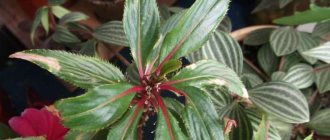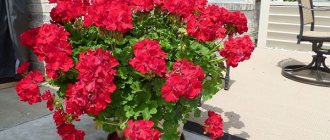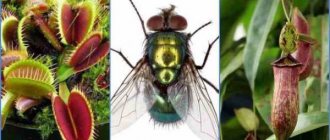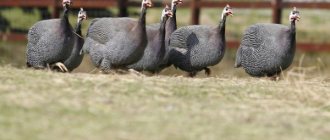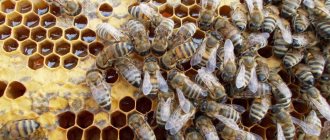Touch-me-not, evergreen, light, Vanka wet flower - all these are names for one plant, which is quite often found in our apartments.
The homeland of this pretty flower is tropical Asia and Africa. It is one of the most unpretentious and easy plants to grow at home. Ogonek takes root easily, grows quickly and looks very impressive during flowering: its compact bushes, strewn with bright flowers, can decorate any room. The Vanka wet flower also has another name - balsam. With good care, it can bloom almost all year round, and providing it with favorable conditions is not difficult.
Even a novice gardener can easily cope with growing this plant. It is perennial, but due to its rapid growth, the shoots usually become elongated, the bush becomes spreading and quite soon loses its compact shape. Therefore, balsam lovers often take cuttings from old plants in the spring, growing new bushes.
Impatiens bloom better if planted in a slightly cramped pot or container. A plant in a pot that is too spacious will not bloom lushly.
Description of the plant
Wet vanilla is scientifically called balsam. More precisely, it is Sultan's balsam. But this name did not catch on among the people: it was too loud for such an unpretentious flower. Therefore, they began to call him in a simple way: Vanka, Ivan. And it began to be called wet because after abundant watering it seems to cry: droplets can be seen on its stems at this time: tears. But they are not salty, but sweet. Other names for this plant: sparkle (due to the bright color of the flowers) and impatiens (due to the shedding of seeds when touching the plant).
Sultan's balsam is a perennial herbaceous plant represented by four hundred species. Its homeland is the countries of Asia and Africa, where tropical and subtropical climates reign. But such a microclimate is easy to recreate at home.
Depending on the variety, under natural conditions, wet roly can reach a height of 0.2 to 2 m. The plant forms a thick, fleshy and juicy, but very fragile and highly branched stem. It is densely covered with dark green leaves sitting on short petioles. In places, sweet crystals form on the shoots: they form in extreme heat after heavy watering when the sweet juice secreted by the plant dries.
The flowering of the flame begins in early spring and ends in late autumn. With good lighting and care, these indoor flowers can form buds even in winter. Flowers can be regular or double. Their color can be one-tone or two-tone. The color of the petals can be different: usually it is bright and rich.
This is interesting! It is believed that wet vanilla gives men virility. Therefore, the flower should be placed in the matrimonial bedroom. However, balsam does not like abuse. Therefore, he stops “acting” if there is frequent fighting in the house. According to other sources, the light brings trouble to the family by causing drunkenness in the head of the family.
General information about balsams
A novice florist can be perplexed when he sees flowers that are completely different from each other in different places. However, they have the same name. There is no mistake here. The name Vanka wet refers to the genus of balsams, which includes about 400 species of plants.
The most common balsams for indoor growing are:
- The traditional type consists of plants that form a spreading bush with fleshy, succulent stems. They grow up to 60 cm in height. Holst's balsams are distinguished by their green foliage and brownish stems. Peters balsams have reddish stems. The color of the leaf plates is bronze. All plants of the traditional type are characterized by flowering with pink, white or red inflorescences.
- From traditional varieties, breeders have developed new varieties and obtained hybrids. The plants became compact and the number of flowers increased. Orange and purple colors have been added to the classic color. Hybrids have appeared that have two-colored inflorescences and variegated foliage. The hybrid wet Vanka indoor flower has become more popular due to its decorative effect. Terry balsam is in particular demand among gardeners.
- Hawker and linear-leaved hybrids are considered new breeding products. They are included in the third group of balsams for indoor cultivation, called New Guinea. The plants are distinguished by large flowers, the diameter of which reaches 10 cm. The petals are characterized by a bright color. Purple and lilac have been added to the traditional colors. The number of red shades has increased. A yellow color has appeared in the variegated foliage of the hybrids.
Hybrids with variegated foliage need the same conditions as for traditional impatiens. The only difference is that in winter they require higher air temperatures.
Advice! Impatiens of any variety like to grow in a cramped pot. If the planting container is large, the grower will not experience lush flowering.
Types and varieties
Here is a description of the most beautiful varieties of indoor balsam with photos:
- New Guinea . This type of wet willow is distinguished by dense foliage, colored in a rich dark green color and covered with a light gloss. It contrasts against the background with bright dark orange flowers, which have a small “spur” at the bottom.
- Paradise . The leaves of this variety are very dark, without gloss. Against their background, simple scarlet flowers look impressive.
- Java . The leaves of this balsam are green with a bronze tint. The flowers are painted in various shades of pink.
During flowering, wet Rolyflower really looks like a light. Regardless of the variety of balsam, the flowers of this plant are as bright as flames.
Amazing flower Vanka wet
The scientific name of the Vanka wet flower is indoor balsam, but it is also called differently: light or impatiens. Although it is considered a tropical crop, some varieties are also found in the wild in the Northern Hemisphere.
Figure 1. The varietal variety of indoor balsams is enormous
First, let's look at the botanical description of the indoor flower. It is usually an annual plant with fleshy stems and elongated leaves with a serrated edge, although some varieties are also cultivated as perennials (Figure 1).
Note: A characteristic feature of the plant is the glossy surface of the leaves. Each plate is covered with a special water-repellent coating, which gives such a visual effect.
First of all, the plant is valued for its decorative value, although traditional medicine experts claim that it also has medicinal properties. However, for most gardeners, Vanka wet is just a beautiful indoor flower with a huge variety of shades of buds, from white and soft pink to rich red.
Selection of location and conditions of detention
Now let’s find out in what conditions impatiens need to be kept so that the plant forms a bush densely covered with bright flowers.
Lighting and location
Vanka wet loves a lot of light, but it must be diffused. Therefore, it is best to place the pot on an eastern or southern windowsill with light shade. You can place the plant at the back of the room if it is well lit. In summer, the flower can be placed on the balcony, but in cold and windy weather it must be brought home. In winter, you can illuminate the balsam with an artificial lamp, but this is not urgently necessary.
Temperature
The optimal temperature for growing Sultan's balsam is +18...+20 oC. The plant is not afraid of short-term heat (about +30 °C), but does not tolerate cold (below +15 °C).
Air and humidity
The flame requires well-humidified air (60-80%). Its leaves should be frequently sprayed with lukewarm water. Do not leave a pot with a flower in a draft.
Soil and pot
The soil for wet roly-poly should be loose and light. It is desirable that it has a slightly acidic reaction. It should not contain many nutrients, since excess organic matter leads to an increase in the green part of the plant and a decrease in the number of buds.
You can buy universal soil for indoor plants. But it is better to use a mixture of river sand, peat and leaf soil. These components must be taken in a ratio of 1:1:2.
A pot for wet roly-poly should be of medium size. Its diameter and width should be 15-20 cm. Indoor balsam grows quickly, so there is no point in planting a small bush in a small pot first: after a month it will have to be transferred to another container.
It is better to choose plastic as a material, as it retains water better. If the pot is ceramic or clay, then you will have to water the flower more often. It is important that the pot has drainage holes.
Actions after purchase
Balsam reacts sharply to drafts. Therefore, when buying it in a store, you need to carefully pack it in paper to eliminate possible stress.
At home, it is recommended to keep the flower separate from other indoor plants. And after 14 days, when the balsam has successfully acclimatized to new conditions, it needs to be transplanted into a nutrient substrate. For this flower, a shallow pot with a diameter of 14-16 cm . Moreover, balsam feels good in both ceramic and plastic containers. The soil for the plant should be loose and nutritious.
Care
Caring for a wet roly-poly is quite simple. Therefore, this flower is suitable for beginners in the field of floriculture.
Watering
The wet plant needs to be watered with lukewarm, settled water every time the top layer of soil begins to dry out. The soil should not be allowed to dry out completely: otherwise the stems will quickly shed their leaves, they will become bare and ugly. At the same time, the number of buds formed will sharply decrease.
You need to water abundantly: some of the excess water should come out through the drainage holes. In summer, during extreme heat, it is better to moisten the soil once a day or two. In winter, watering can be reduced to once a week. During the period of active growth, it is advisable to give the plant a shower 3-4 times a month: to do this, spray it with lukewarm water from a spray bottle. It is better not to do this procedure in winter.
Top dressing
Since wet willow blooms from spring to late autumn, it needs to be fed only with complex fertilizers for flowering plants. Fertilizers from the following brands are suitable for this: Agricola, Zdraven, Kemira. Uniflor-Bud fertilizer is well suited for this.
Fertilizing is combined with watering and done once every 2 weeks until the plant finishes blooming. But it is better to use a less concentrated solution (take 2 times less fertilizer than indicated on the package), since excess minerals will reduce the number of buds that form.
Loosening, mulching
When a hard crust forms, the soil in the pot must be carefully loosened. This can be done using a toothpick: stick it into the ground strictly vertically so as not to damage the balsam roots.
Pinching, pinching, pruning
There is no need to trim indoor flowers. But if you want to get a more lush bush, then you can pinch out the growing point of the side shoots. Then new branches will grow on them. This also stimulates the formation of new buds. But this makes the leaves become smaller and less beautiful.
Transfer
Wet Vanya should be replanted every spring. Moreover, it is not necessary to use a new pot: you can use an old one. Only it will need to be treated with potassium permanganate. But the soil must be fresh. A new container will only be needed if the flower initially grew in a very small (less than 10-15 cm in diameter) pot.
Reproduction
Sultan's balsam is propagated by stem cuttings. For this:
- Cut off the top of a healthy shoot 5-6 cm long.
- Place it in a glass of water.
- Change the water every day.
- When roots 2-3 cm long appear (usually after 2 weeks), plant the cuttings in a pot.
Another way to root cuttings is to plant them directly in a pot with soil. But you need to make sure that the substrate never remains dry.
Advice! While rooting the balsam stem cutting, place the pot in a shaded area.
Balsams are rarely propagated by seeds. Typically, this method of propagation is resorted to when there is nowhere to get a stem cutting from.
Planting wet vanilla seeds for seedlings:
- Prepare a bowl by pouring the substrate into it that is used for growing adult plants.
- Moisten the soil and scatter balsam seeds over its surface.
- Lightly press down the seeds with your hands, but do not bury them.
- Cover the blanket with polyethylene and place it in a well-lit and warm place.
- Ventilate the bowl daily by removing the film from it. If necessary, moisten the substrate by spraying.
- After the first shoots appear, remove the film.
- When the seedlings reach a height of 1 cm, transplant them into seedling cups.
When the seedlings form powerful bushes, pinch their tops and transplant them into permanent pots.
Diseases and pests
Diseases rarely affect impatiens. A flower can only get sick if it is not cared for properly. This usually happens in winter, when it is cool on the windowsill and cold air blows through the cracks in the window. At this time, with excessive watering, the soil turns sour and the roots begin to rot. In this case, the flower must be urgently transplanted into a new pot with a new substrate.
Other problems you may encounter when growing moss at home, and how to solve them:
- Leaves fall . The flower is either too hot or too cold. This can also happen with infrequent watering. You will have to adjust the maintenance conditions and restore the watering schedule.
- There are very few buds . This happens if balsam is kept in poor lighting conditions. Another reason is the excess amount of minerals and organic matter in the soil. In this case, the plant forms a powerful bush, and it looks completely healthy.
- Leaves become pale . They sag, and there is a thin cobweb in the internodes. This happens when a plant is damaged by spider mites. Typically, this pest lives in conditions of low air humidity. To combat it, use insecticides (Aktaru, Inta-vir, Karbofos).
- Leaves and stems are deformed . And on their surface clusters of pests are visible. This is an aphid. It can be destroyed manually. Spraying the plant with soapy water also helps against it.
Vanka wet is a fast-growing and almost continuously flowering indoor plant. It requires good but simple care. That is why the flower is so common among beginners and amateurs. Plant it on your windowsill to admire the fiery flowers against the dark and shiny foliage.
Possible growing difficulties
Unsuitable soil, microclimate, and errors in maintenance conditions immediately affect the appearance of balsam. You can familiarize yourself with care errors and their consequences in the table.
Table - Possible difficulties when growing balsam
| External manifestation | Main reasons | Help the plant |
| Vanka's wet leaves are turning yellow | – Dry air; – waterlogging of the soil; – root rotting; – excess fertilizer | – Check the root system for rot; – adjust the care regimen |
| The leaves are drooping | - Heat; – lack of moisture | – In hot weather, balsam is sprayed; – water regularly, avoiding stagnation of moisture |
| Vanya's wet buds are falling off | – Dry air; – excess fertilizer; - cold; – soil drying out; – pest invasion | – During flowering, balsam is kept in moderate heat; – water regularly; – dilute the fertilizer according to the instructions |
| Variegated forms lose their characteristic color | – Lack of light; – excess fertilizer | – Move the balsam to a bright place or install additional lighting |
| Leaves fall, flowering stops | – Lack of light combined with low temperature; | – Until the end of flowering, maintain a stable temperature of at least 20˚С |
| Leaves become smaller, stems become longer | – Cramped pot; – lack of nutrients; – poor lighting; – heat | – The balsam is cut off and transplanted into a larger pot; – adjust the conditions of detention |
| Leaves curl and fall | – Cool content combined with waterlogging of the soil | – Reduce watering; – increase the temperature of the contents |
If the balsam suddenly turns yellow, wilts and begins to shed its leaves, this is a sure sign of stress. Its condition is negatively affected by drafts, sudden temperature changes, and changes in lighting intensity.
